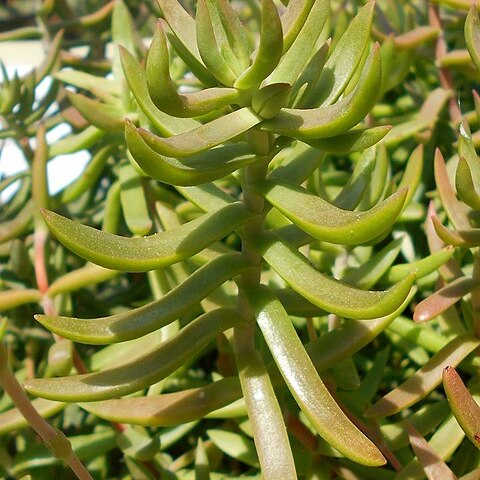Perennial dwarf shrub, succulent, erect, much branched, woody, 0.5 m high, old leaves deciduous. Leaves opposite, linear-elliptic, 10-20 x 2-3 mm, acute, flat above, convex below, as thick as wide, shortly velvety, grey-green to brown. Inflorescence a rounded, terminal thyrse with 3-many globular dichasia; flowers sessile; peduncle 0.15-0.25 m long, covered with hairs. Calyx fleshy, swollen, green to yellowish green, puberulous. Corolla tubular, fused 0.5-0.8 mm, cream-coloured; lobes oblong-lanceolate, 2.5-3.5 mm long, terminal elongate ellipsoid dorsal appendage present, conspicuous apex on inside absent. Flowering time Dec.-Feb.
Much-branched shrublet, 0.1-0.5 m tall. Leaves linear-elliptic, flat above and convex below, 10-20 x 2-3 mm, shortly velvety. Flowers in round-topped clusters, in a 3-many-branched inflorescence, on a shortly pubescent peduncle 0.15-0.25 m long, tubular petals 2.5-3.5 mm long, fused in lower 1 mm, with a fleshy, terminal appendage, cream.
Shrublet to 50 cm. Leaves opposite, linear-elliptic, flat above, rounded beneath, shortly velvety. Flowers in rounded clusters on hairy peduncles, tubular, cream-coloured, petals ± 3 mm long.

